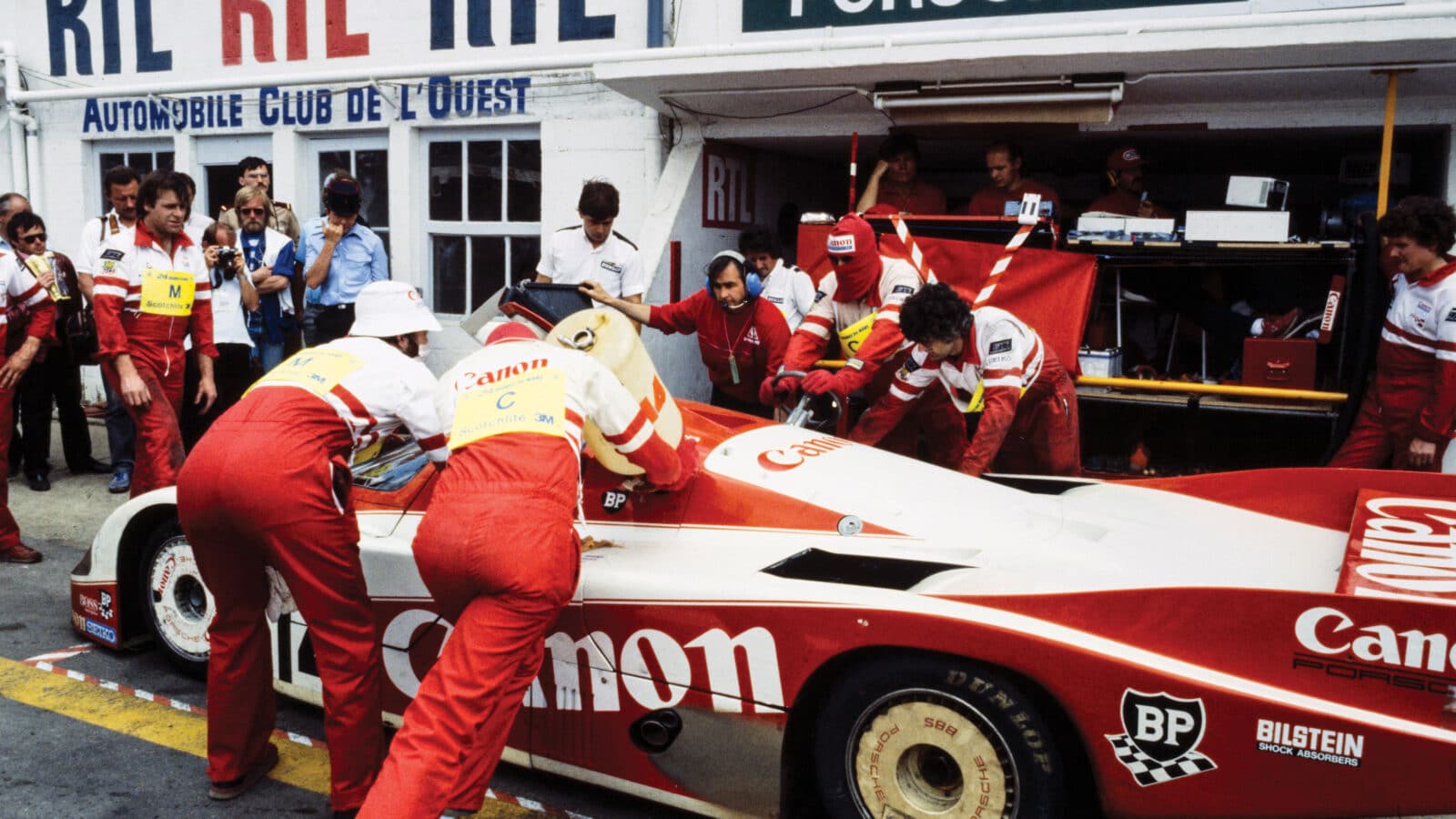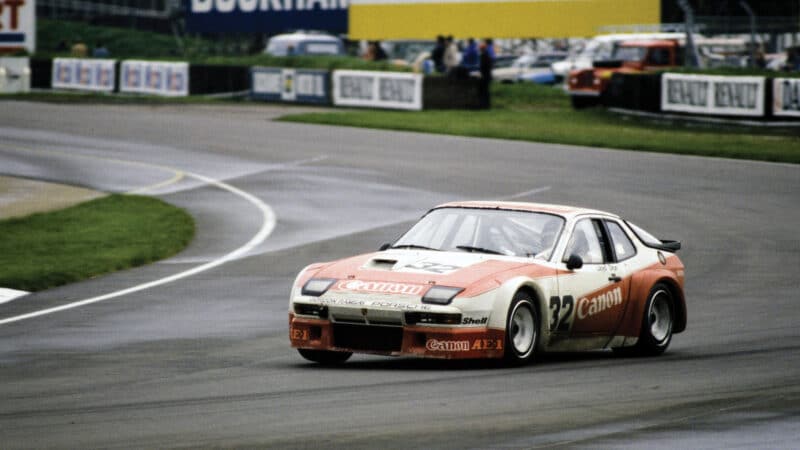It’s easy! Just put petrol in
Peter Stevens looks back at his previous exploits at La Sarthe

Follow that New Man Porsche 956... the Canon 956 had to settle for second at Le Mans 1983
Getty Images
The Le Mans 24 Hours is like no other race. There is something about this more-than-100-year-old enduro that drags one back to give it another go, even after disaster or success. As part of a team it is addictive.
After the first time at Le Mans it seemed that it would be easy to talk myself out of going again, but a further 18 times gave me a good idea of what was needed to win this exhausting race. “Easy,” I often say, “just put petrol in, replace the tyres and stay on the road. That is all you have to do.” The hard bit is making sure that this is ‘all you have to do’. And occasionally, that is indeed all the winner has had to do.
You need to have a huge amount of self-belief and an ability to entice money from sponsors if you want to be taken seriously in motor sport. My great friend Richard Lloyd had both those requirements plus an iron will coupled with great charm. We first teamed up to race a Chevrolet Camaro and Opel Commodore during the early 1970s, Richard doing the driving and me all the organisational and tactical stuff.
The Camaro was a frequent winner in the British Saloon Car Championship. But a decision by Richard to get a new VW Golf GTI in 1977 was the start of our road to Le Mans. We modified it so well that we won the up-to-1600cc class in 1977, ’78 and ’79 and we were also second overall in the championship in ’78 .
The next step up was for Richard to buy a Porsche 924 GTR in 1981, with the objective of racing in the European Sportscar Championship, and our real purpose, to race at Le Mans. The Porsche factory had run three 924 GTRs at Le Mans in 1980 so it seemed like a good plan.
Chassis number BS720006 was one of the first customer cars sold and with Canon sponsorship we were set for Europe. It was quickly competitive coming second in the GT class at the Monza 1000Kms, the Silverstone 6 Hours and the Nürburgring 1000Kms races. A good performance at Le Mans seemed possible. Instead, it was a disaster; a new factory fitted engine had a continuous boost control problem. When the car set out down the long Mulsanne Straight the boost gradually disappeared. Tony Dron, who had raced a factory 924 in 1980 and was sharing the car with Richard Lloyd, was very frustrated. The factory decided there was something wrong with the engine and gave us a second ‘works’ engine. This was the same as the first. Dron described how, on the Friday before the race, “I went to the new boss of Porsche, Peter Schutz, and gave him a severe talking-to, but I couldn’t get a result!” His annoyance came from the fact that we were only able to qualify 56th out of a field of just 55 cars that were allowed to start. We missed the cut by a tenth of a second over a plus-4min lap.
In truth it was a good thing that we didn’t qualify. We were hopelessly unprepared for the 24-hour race. We had not realised that you needed a separate timing crew at the signalling pits at the exit of the Mulsanne Corner, with their own caravan or tents and a supply of food and drink to sustain them for the whole event. The old Le Mans pits were just an empty concrete box that smelt strongly of urine.

Stevens’ Canon Porsche 924 GTR, Silverstone 6 Hours, ’81
You had to build your own tables and timing stand too. This was connected to the signal pit by a vintage hand-cranked telephone. Properly equipped teams had radio connections but the signal strength was hopeless unless you built your own 100ft aerials behind the pit and out in the country! And me, five mechanics and our ‘truckie’ Tom (the local Silverstone postman), who looked after the wheels and tyres were never going to survive 24 hours of racing. We had a little motorhome for food but had no place for the drivers to rest between stints.
When I got back home, I wrote myself a letter to be opened at the start of 1982. It said, “DON’T GO BACK TO LE MANS”, but of course we did.
In 1983 Richard and I flew across to Zuffenhausen where Richard handed over a briefcase containing Canon’s money and, as simple as that, we bought a Porsche 956. They said it was in the garage and handed us a key. We went downstairs and Richard drove it out into the yard where I quickly put on Canon stickers.
Just two years later, with the team being run by my great friend David Price, we spent 24 hours chasing the Joest New Man factory-supported Porsche 956 with our Canon 956 driven by James Weaver, Jonathan Palmer and Richard Lloyd. We came second because, as I discovered years later, we had a 2.6-litre customer engine while the Joest car had a factory 2.8-litre. More importantly, all that team did was change tyres and put in petrol while we had to change the Motronic control box, a six-minute job which put us one lap behind. But second seemed pretty good to us as a small, private team, and Tom still looked after the tyres!
